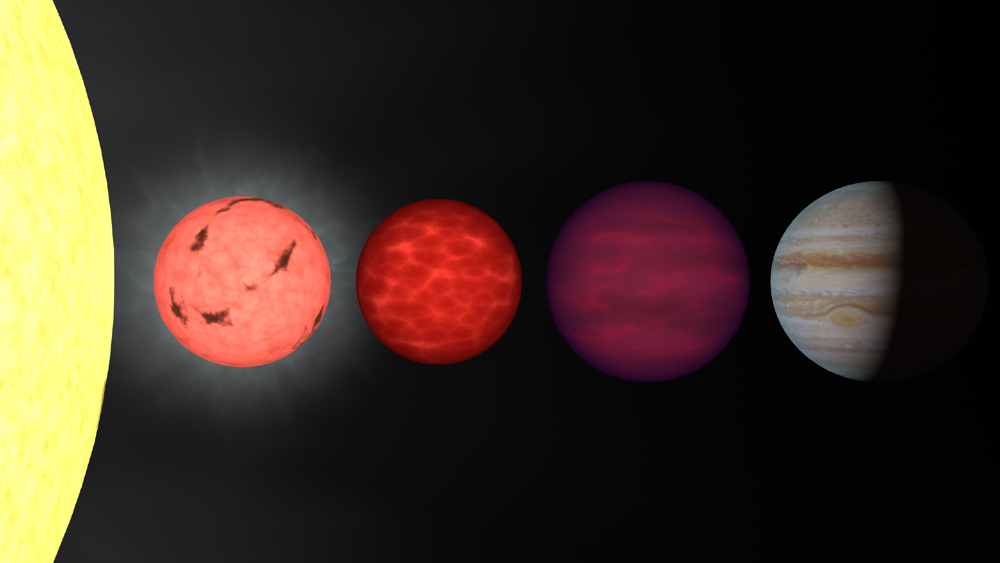The team used a giant 1,000-feet radio telescope at Arecibo, Puerto Rica to look for radio signals from a class of objects known as brown dwarfs. Brown dwarf's bridge the gap between gas giant planets, and hydrogen-fusing stars.
The astronomers found that a brown dwarf named J1047+21 that lies 33.6 light years away in the constellation Leo could help boost the odds of discovering life in other places in the universe.
"This object is the coolest brown dwarf ever detected emitting radio waves - it's half the temperature of the previous record holder, making it only about five times hotter than Jupiter," Matthew Route, a graduate student at Penn State and the lead author of the discovery paper, said in a press release.
The newly discovered star has a surface temperature that is not much higher than that of a giant plant, and is scarcely visible in optical light.
The radio flares seen at the giant telescope show that the star has a strong magnetic field, which could imply that the same could be true of other similar stars, according to the researchers.
"We hope that in the future we'll be able to detect yet colder brown dwarfs, and possibly even giant planets around other stars," Wolszczan, an Evan Pugh Professor of Astronomy and Astrophysics and the leader of the project, said.
He said the possibility that young, hot planets around other stars could be detected in the same way the team did has implications for the chances of finding life in other places in the Milky Way Galaxy.

Discovering the brown dwarf through radio signals helps broaden the window through which astronomers are able to study the atmosphere and interiors of this class of stars.
The researchers said that the brown dwarf's atmosphere must be made of neutral gas, which would not give off radio signals like they saw. So, the energy to drive the signals is coming from magnetic fields found deep inside the star, according to the astronomers.
The astronomers said that this field is similar to the field that protects the Earth from dangerous high-energy particles.
The astronomers will be able to determine how stable the magnetic field is over time by monitoring J1047 +21, and also find out the size of the emitter itself from flare duration.
The research was published in The Astrophysical Journal, a peer-reviewed scientific journal published by the Institute of Physical for the American Astronomical Society.




Reader Comments
to our Newsletter